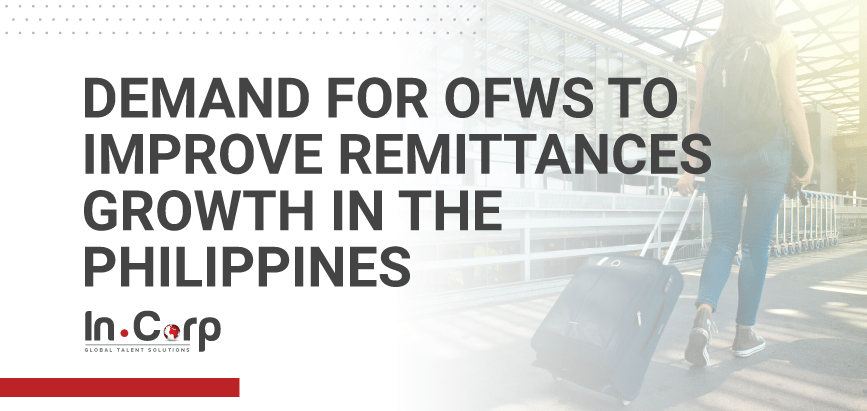
Demand For OFWs to Improve Remittances Growth in the Philippines
The demand for Filipino workers is revving up remittances in the Philippines as other countries are in dire need of doctors, health workers, skilled builders, and housekeepers while they recuperate from the pandemic together with the growing utilization of digital financial services.
According to the latest forecast of the Bangko Sentral ng Pilipinas (BSP), remittances from overseas Filipino workers (OFWs) are anticipated to increase by 4% per annum.
With the consistent long-term trends, it is stated that remittances will grow not just by 2022 but also in 2023.
In 2021, personal compensation reached a new high record of $34.9 billion of which, 90% or $31.9 billion was sent through banks.
After decreasing by 0.8% from $33.5 billion in 2019, it grew by 5.1 percent from $33.2 billion in 2020. Over the past 10 years, personal remittances increase by an average of 5.7% annually.
BSP Governor Benjamin Diokno stated in a media briefing, “It is now getting more and more difficult [for remittances] to grow at 5 percent, 7 percent or so, because we already have a huge base.”
Diokno added, “It would have been easier if we had $10 billion a year, but at more than $30 billion a year, a growth of 4 percent or 5 percent is substantial.”
BSP expressed that the key factors of remittances growth cover the increased global demand for OFWs, especially jobs that are related to medical, health services, construction, and housekeeping as this helps certain countries in their pandemic recovery operations.
In 2021, OFW deployment reached 675,000 for the month of January to November, reviving from a 75% drop in 2020.
The Department of Labor and Employment (DOLE) has also entered into Bilateral Labor Agreements with host countries to continue the authorization of OFW entry.
In addition, there is a growth in the utilization of digital financial services in remittance transfers, which is seen to be strengthening the upward trend of adoption of these technologies in both domestic and international transactions.
Furthermore, OFWs tend to save a portion of their remittances in Philippine pesos for their family’s needs.
Diokno expressed that remittances helped spur consumption in the country in the midst of the pandemic.
According to the BSP’s Fourth Quarter 2021 Consumer Expectations Survey, 96% of the households which received remittances used the funds for food and other household needs, 50.5% for education, 45.8% for medical expenses, and 31.7% for savings.
Diokno mentioned that the BSP is encouraging senders and receivers to progressively channel remittances into savings and investments by cultivating financial learning for them.


